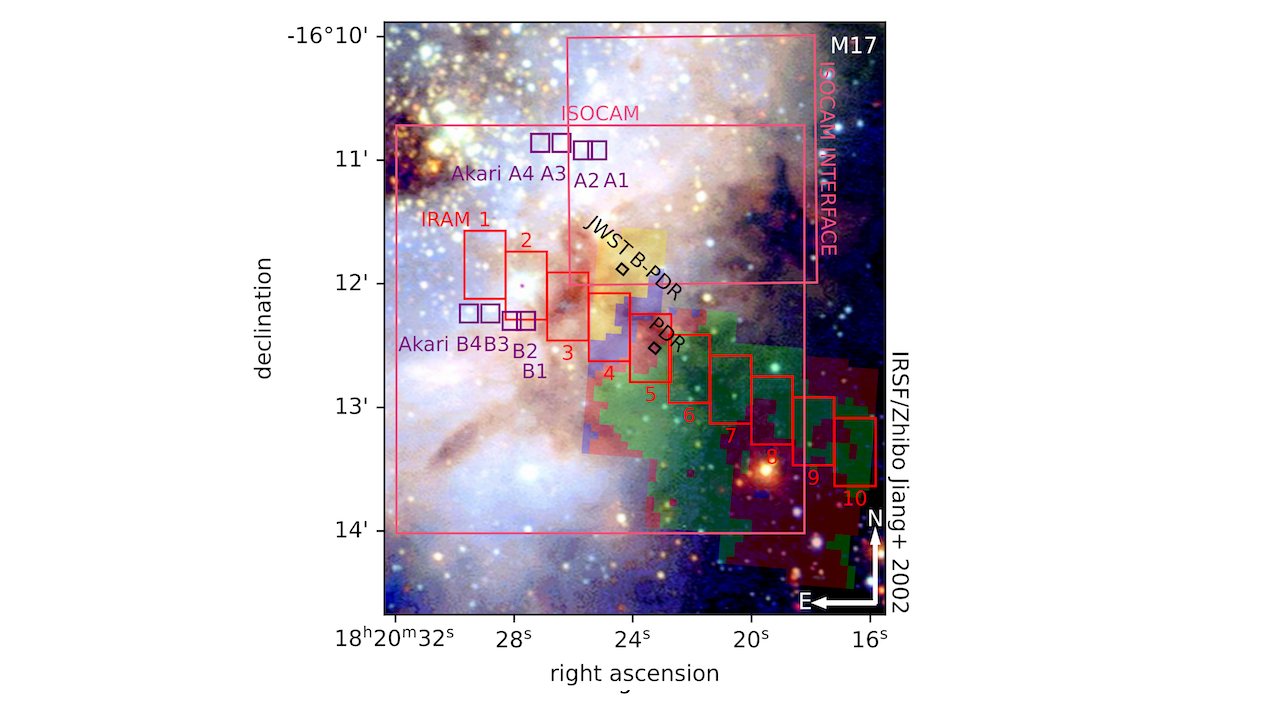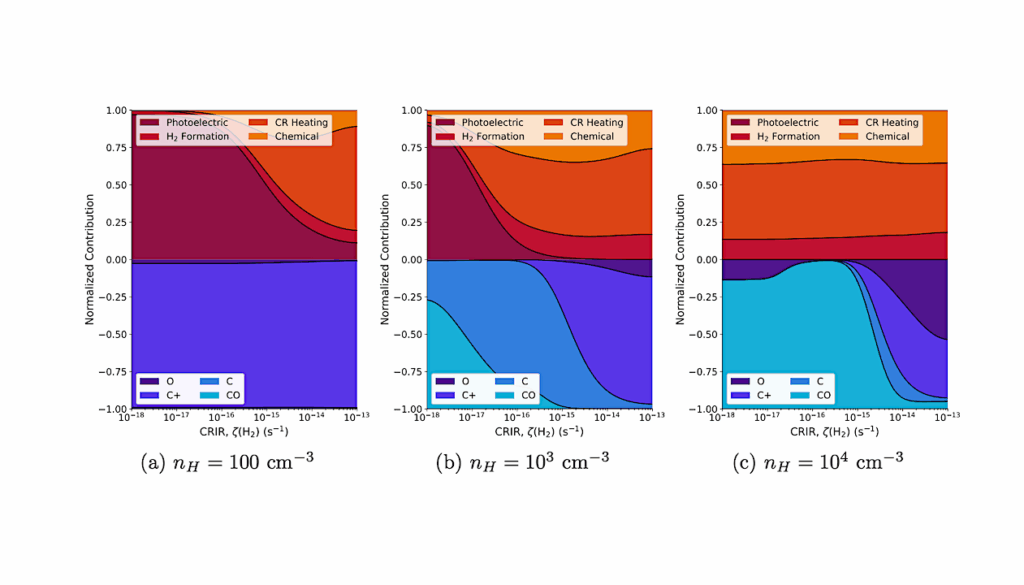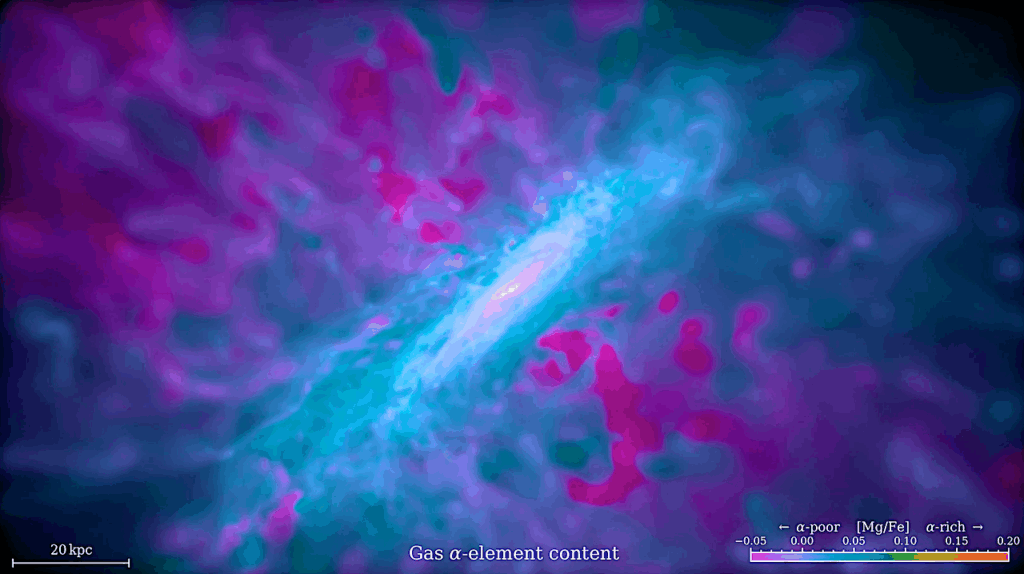JWST: Deuterated PAHs, PAH-nitriles, and PAH Overtone and Combination Bands I: Program Description and First Look

A first look is taken at the NIRSpec 1-5 μm observations from JWST program 1591 that targets 7 objects along the low-mass stellar life cycle with PAH emission.
Spectra extracted from a 1.5′′ radius sized circular aperture are explored, showing a wealth of features, including the 3 μm PAH complex, the PAH-continuum, and atomic and molecular emission lines from HI, He, H2, and other species. CO2- and H2O-ice absorption and CO emission is also seen.
Focusing on the bright-PDR position in M17, the PAH CH stretch falls at 3.29 μm (FWHM=0.04 μm). Signs of its 1.68 μm overtone are confused by line emission in all targets. Multi-component decomposition reveals a possible aliphatic deuterated PAH feature centered at 4.65 μm (FWHM=0.02 μm), giving [D/H]alip.=31±12.7%.
However, there is little sign of its aromatic counterpart between 4.36-4.43 μm. There is also little sign of PAH-nitrile emission between 4.34-4.39 μm. A PAH continuum rises from ∼1 to 3.2 μm, after which it jumps by about a factor of 2.5 at 3.6 μm, with bumps at 3.8, 4.04, and 4.34 μm adding structure. The CO2 absorption band in M17 is matched with 10:1 H2O:CO2 ice at 10 K. The v=0 pure rotational molecular hydrogen population diagram reveals >2200 K UV-pumped gas.
The hydrogen Pfund series runs from levels 10 to >30. Considering Brα/Brβ=0.381±0.01966 and Case B recombination results in AV≃8. CO emission in IRAS21282+5050 originates from 258 K gas. In-depth spectral-spatial analysis of all features and targets are planned for a series of forthcoming papers.
C. Boersma, L. J. Allamandola, V. J. Esposito, A. Maragkoudakis, J. D. Bregman, P. Temi, T. J. Lee, R. C. Fortenberry, E. Peeters
Comments: 23 pages, 20 figures, to be published in ApJ
Subjects: Astrophysics of Galaxies (astro-ph.GA); Solar and Stellar Astrophysics (astro-ph.SR)
Cite as: arXiv:2310.05774 [astro-ph.GA] (or arXiv:2310.05774v1 [astro-ph.GA] for this version)
Submission history
From: Christiaan Boersma
[v1] Mon, 9 Oct 2023 14:58:44 UTC (13,633 KB
https://arxiv.org/abs/2310.05774
Astrobiology, Astrochemistry








